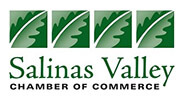Everyday Tech Wins: How Local Businesses Can Run Smarter Without Breaking the Bank
TL;DR
Running a small business doesn’t require fancy tech stacks or big budgets. The secret is using everyday tools—like scheduling apps, shared folders, and digital payment systems—to automate repetitive work, simplify communication, and save money. Below, we explore how local shops, farms, restaurants, and service providers in the Salinas Valley can get more done in less time with simple, practical tech moves.
Rethinking “Efficiency”: Small Tools, Big Results
Most business owners assume “technology upgrades” mean expensive software and IT headaches. In reality, efficiency often comes from using what’s already available—more intentionally.
• Think: digital calendars that sync with your phone instead of paper schedules.
• Think: a simple POS system instead of manual tallying.
• Think: cloud storage instead of a filing cabinet avalanche.
That shift—from “fancier” to “simpler”—creates room for better focus and less burnout.
Local Wins: Real Examples from Everyday Tools
These aren’t flashy—but they work.
How-To: Build a “Mini Efficiency System”
Here’s a fast-track checklist to modernize without the overwhelm:
Small Business Efficiency Checklist

Create one digital hub (Google Drive or Dropbox) for key documents.

Automate recurring payments or invoices with your bank or POS tool.

Use shared calendars to prevent scheduling mix-ups.

Batch tasks—check email twice a day instead of all day.

Train one person per month on a new app or tool.

Back up important files to the cloud weekly.

Review subscriptions—cancel unused tools quarterly.
By treating tech setup like equipment maintenance, you’ll keep operations humming smoothly.
Simplify Paperwork—Go Digital (The Smart Way)
Paper forms, signatures, and contracts eat hours every week. Luckily, there’s an easy upgrade: use built-in electronic signature features in programs you already know.
Instead of printing and scanning, you can add signatures directly in Word. Following these steps to insert a signature in Word streamlines your document flow and keeps everything secure. You’ll reduce human error, speed up customer approvals, and make your business look more professional—all without new hardware.
Product Spotlight: Asana
Even small teams benefit from lightweight task management tools. Asana is a good example—it turns to-do lists into trackable projects. Local restaurants use it for menu planning, auto shops for job scheduling, and nonprofits for volunteer coordination. The basic version is free and takes less than an hour to set up.
Quick Resource Roundup
Here’s a list of practical, trustworthy tools for local business owners:
• Grammarly – write clearer emails
• Zapier – connect apps without coding
• FreshBooks – easy invoicing and accounting
• Buffer – schedule social posts
• Calendly – let clients book meetings online
Each of these can replace at least one manual task or process—and that’s real efficiency.
FAQ: Everyday Tech & Local Business Efficiency
Q1: What if my staff isn’t “tech-savvy”?
Start small. Pick one simple tool (like digital calendars) and make it part of your daily rhythm before adding another.
Q2: Do I need a consultant to get started?
No. Most modern tools are plug-and-play and include tutorials.
Q3: How do I know which subscriptions are worth it?
Measure by time saved or errors prevented. If it doesn’t clearly do either—cancel it.
Q4: What if I prefer paper systems?
You can still digitize only the repetitive parts—like receipts or signatures—without abandoning your preferred workflow.
Closing Thought
Technology doesn’t have to be big, shiny, or complicated to make an impact. The goal isn’t to automate your humanity—it’s to free it up. Every minute you save using simple tools is another minute to connect with customers, improve service, or just breathe easier.
Efficiency starts small—and grows with you.
